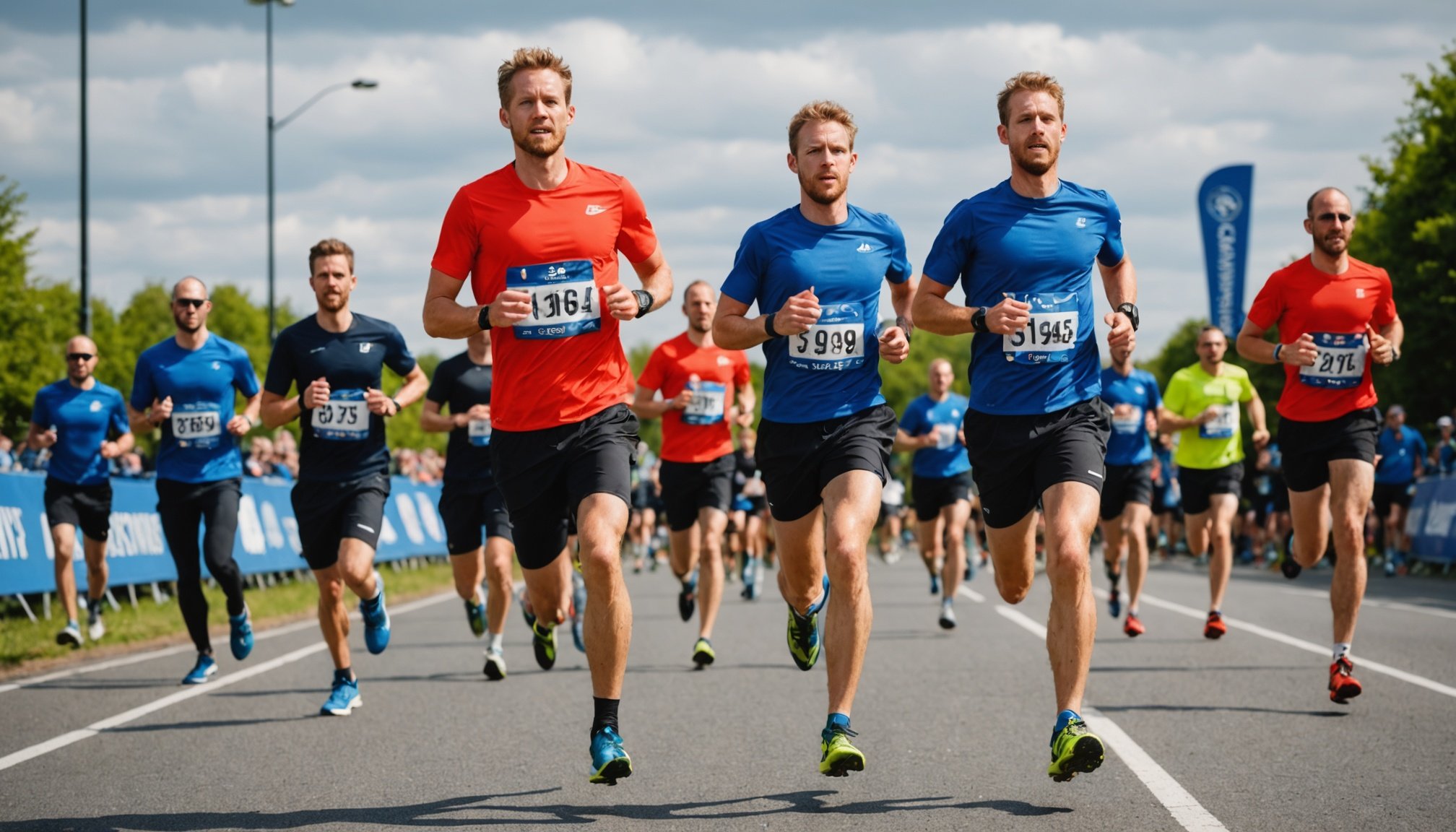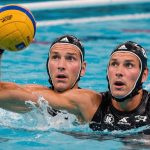Top Recovery Strategies for UK Marathon Runners: Effective Cool-Down Techniques After a Race
Understanding the Importance of Recovery
When you cross the finish line of a marathon, the sense of accomplishment is overwhelming, but the real work is just beginning. Recovery is a crucial aspect of any runner’s training, especially after a grueling event like a marathon. Proper recovery helps your body heal, rebuild, and prepare for the next challenge.
“Recovery is not just about resting; it’s about actively helping your body to repair and adapt,” notes a sports physiologist. This involves a combination of physical, nutritional, and mental strategies to ensure you come back stronger and healthier.
Also to read : Revolutionizing Training: The Role of Virtual Reality in the Development of UK Sports Teams
Immediate Post-Race Recovery
Cool Down and Stretching
After crossing the finish line, it’s essential to cool down properly to help your body transition from an intense physical state to a more relaxed one. A gentle 10-15 minute jog or walk followed by static stretches can help reduce muscle soreness and improve blood flow.
- Focus on major muscle groups: Hamstrings, quadriceps, calves, and hip flexors.
- Hold each stretch for 20-30 seconds: This allows for maximum relaxation of the muscles.
- Breathe naturally: Avoid holding your breath, as this can increase blood pressure.
Hydration and Nutrition
Replenishing fluids and electrolytes is vital after a marathon. Aim to consume between 30-60 grams of carbohydrates per hour, along with isotonic drinks or gels to help restore energy stores[1].
Have you seen this : Top Recovery Techniques for UK Cyclists: Essential Post-Ride Strategies for Long-Distance Success
- Electrolyte-rich drinks: Help rebalance sodium, potassium, and other essential minerals.
- Protein intake: Include a source of protein within 30-60 minutes after the race to aid in muscle repair.
- Hydrate continuously: Drink water or sports drinks over the next few hours to ensure proper hydration.
Active Recovery Techniques
Active Recovery Days
Active recovery involves engaging in low-intensity activities that promote blood flow without putting excessive strain on the muscles. This can include light cycling, swimming, or a leisurely walk.
- Keep it short and easy: Aim for sessions that are neither long nor intense to avoid further fatigue[3].
- Enhance vascularization: Easy physical activity helps in the repair and supercompensation of tissues.
- Mental benefits: Active recovery days help the brain learn to limit its dependence on dopamine, reducing the risk of overtraining.
Foam Rolling and Self-Myofascial Release
Foam rolling is a simple yet effective way to reduce muscle soreness and improve circulation.
- Target key areas: Focus on the IT band, quadriceps, hamstrings, and calves.
- Roll slowly and consistently: Apply moderate pressure and roll the foam roller over the muscle groups.
- Spend extra time on sore spots: Hold the foam roller on areas of tension for a few seconds to release the muscle.
Nutritional Recovery
Protein and Carbohydrates
Proper nutrition is key to recovery. Here’s a detailed look at what you should be consuming:
- Protein:
- Helps in muscle repair and rebuilding.
- Aim for 15-20 grams of protein within 30-60 minutes after the race.
- Good sources include lean meats, fish, eggs, dairy, and plant-based options like beans and nuts.
- Carbohydrates:
- Essential for replenishing glycogen stores.
- Choose complex carbs like whole grains, fruits, and vegetables.
- Aim for a ratio of 3:1 or 4:1 carbohydrates to protein.
Hydration
Hydration is crucial not just immediately after the race but also in the days following.
- Monitor urine color: Aim for a pale yellow color to ensure you are well-hydrated.
- Drink regularly: Spread out your fluid intake over the day rather than consuming large amounts at once.
Sleep and Rest
The Role of Sleep in Recovery
Sleep is perhaps the most underrated recovery tool. It is during sleep that your body repairs and rebuilds muscles, replenishes energy stores, and adapts to the demands of training.
- Aim for 7-9 hours: Ensure you get adequate sleep each night to support recovery.
- Establish a routine: Go to bed and wake up at the same time each day to regulate your body’s internal clock.
- Create a sleep-conducive environment: Keep your bedroom cool, dark, and quiet to improve sleep quality.
Compression Gear and Ice Baths
Compression Gear
Compression gear, such as tights and sleeves, can help improve blood flow and reduce muscle soreness.
- Wear it post-run: Use compression gear immediately after your run and for several hours afterward.
- Choose the right fit: Ensure the gear is snug but not too tight, as this can impede blood flow.
Ice Baths
Ice baths, or cold water immersion, can be beneficial in reducing inflammation and muscle soreness.
- Keep it short: Limit ice baths to 10-15 minutes to avoid hypothermia.
- Monitor temperature: The water should be cold but not icy; around 10-15°C is ideal.
- Avoid frequent use: Ice baths should be used sparingly due to potential negative effects on immune function and muscle repair if overused.
Sports Massage
Benefits of Sports Massage
Sports massage can be a valuable tool in your recovery arsenal.
- Improves blood flow: Helps in the removal of waste products and the delivery of oxygen and nutrients to the muscles.
- Reduces muscle tension: Eases muscle soreness and improves range of motion.
- Enhances recovery: Can be used both pre and post-event to aid in preparation and recovery.
Sample Recovery Plan
Here is a sample recovery plan for the days after a marathon:
Day 1: Rest and Hydration
- No running: Take a complete rest day to allow your body to recover.
- Hydrate and eat: Focus on replenishing fluids and consuming a balanced diet rich in carbohydrates and protein.
- Light stretching: Gentle stretching to help reduce muscle soreness.
Day 2-3: Active Recovery
- Light cycling or swimming: Engage in low-intensity activities to promote blood flow.
- Foam rolling and self-myofascial release: Use foam rollers to reduce muscle tension.
- Compression gear: Wear compression tights or sleeves to aid in recovery.
Day 4-7: Gradual Return to Training
- Short runs: Start with short, easy runs to gradually return to training.
- Strength training: Incorporate light strength training to help rebuild muscle.
- Sleep and nutrition: Continue to prioritize sleep and a balanced diet.
Practical Insights and Actionable Advice
Listen to Your Body
Recovery is not a one-size-fits-all approach. Listen to your body and adjust your recovery plan accordingly.
- Pay attention to pain: If you experience severe pain or discomfort, take extra rest days or seek medical advice.
- Adjust your nutrition: Tailor your diet based on how your body responds to different foods.
Use Technology to Your Advantage
Utilize recovery tools and apps to track your progress and stay on top of your recovery plan.
- Wearables: Use fitness trackers to monitor your heart rate, sleep, and other vital signs.
- Recovery apps: Apps like Strava or Training Peaks can help you plan and track your recovery.
Recovery after a marathon is a multifaceted process that involves physical, nutritional, and mental strategies. By incorporating cool-down techniques, active recovery days, proper nutrition, adequate sleep, and the use of compression gear and sports massage, you can ensure a smooth and effective recovery.
As one marathon runner put it, “Recovery is where the real training happens. It’s where you build the foundation for your next great run.”
Table: Comparison of Recovery Techniques
| Technique | Benefits | How to Implement |
|---|---|---|
| Cool Down | Reduces muscle soreness, improves blood flow | Gentle 10-15 minute jog or walk followed by static stretches |
| Active Recovery | Enhances vascularization, reduces muscle tension | Light cycling, swimming, or walking |
| Foam Rolling | Reduces muscle soreness, improves circulation | Roll slowly over key muscle groups |
| Compression Gear | Improves blood flow, reduces muscle soreness | Wear compression tights or sleeves post-run |
| Ice Baths | Reduces inflammation, muscle soreness | Limit to 10-15 minutes, monitor temperature |
| Sports Massage | Improves blood flow, reduces muscle tension | Use pre and post-event to aid in preparation and recovery |
| Proper Nutrition | Replenishes energy stores, aids in muscle repair | Consume balanced diet rich in carbohydrates and protein |
| Adequate Sleep | Repairs and rebuilds muscles, replenishes energy stores | Aim for 7-9 hours of sleep each night |
Detailed Bullet Point List: Top Recovery Tips for Marathon Runners
-
Cool Down Properly:
-
Engage in a gentle 10-15 minute jog or walk after the race.
-
Follow with static stretches focusing on major muscle groups.
-
Hold each stretch for 20-30 seconds.
-
Hydrate and Refuel:
-
Consume between 30-60 grams of carbohydrates per hour post-race.
-
Include electrolyte-rich drinks to rebalance essential minerals.
-
Eat a balanced meal with protein within 30-60 minutes.
-
Active Recovery:
-
Engage in low-intensity activities like cycling or swimming.
-
Keep sessions short and easy to avoid further fatigue.
-
Enhance vascularization and aid in muscle repair.
-
Use Compression Gear:
-
Wear compression tights or sleeves post-run to improve blood flow.
-
Choose the right fit to avoid impeding blood flow.
-
Take Ice Baths:
-
Limit ice baths to 10-15 minutes to avoid hypothermia.
-
Monitor water temperature to ensure it is cold but not icy.
-
Get a Sports Massage:
-
Use sports massage pre and post-event to aid in preparation and recovery.
-
Focus on improving blood flow and reducing muscle tension.
-
Prioritize Sleep:
-
Aim for 7-9 hours of sleep each night to support recovery.
-
Establish a routine to regulate your body’s internal clock.
-
Listen to Your Body:
-
Pay attention to pain and adjust your recovery plan accordingly.
-
Take extra rest days if necessary or seek medical advice.
-
Use Technology:
-
Utilize wearables to monitor heart rate, sleep, and other vital signs.
-
Use recovery apps to plan and track your recovery.











